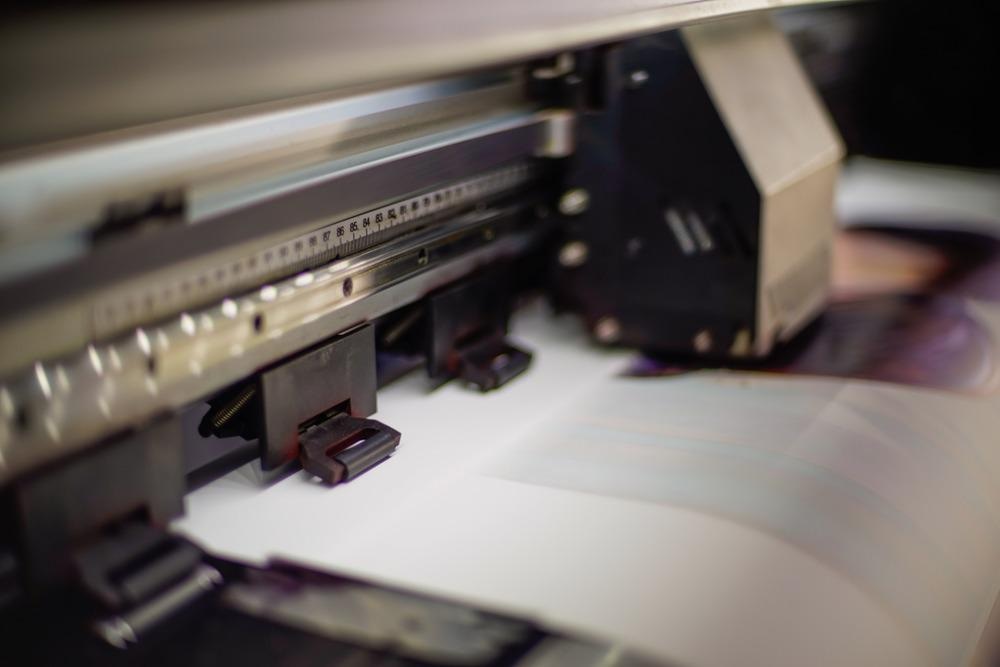The development of a straightforward pre-deposition assisted method for inkjet printing of a flexible graphene-based pressure sensor is the subject of a recent study published in the journal Carbon.

Study: A novel pre-deposition assisted strategy for inkjet printing graphene-based flexible pressure sensor with enhanced performance. Image Credit: Chaikom/Shuttertstock.com
Graphene: An Exceptional Nanomaterial
Single-layer graphene has a unique range of mechanical properties and heat capacity. These remarkable features make graphene an attractive contender for wearable digital equipment, biosensors, metal-oxide-semiconductor devices, and nanoelectronics. Furthermore, graphene's physical characteristics can be tuned for application needs through fault engineering, mechanical loading, molecular crosslinking, and doping.
Significance of Inkjet Printing
Traditional microfabricated devices in sterile settings need a variety of components and sophisticated sets of material processing equipment, including subtractive production lines containing hazardous chemicals. Furthermore, these semiconductor-manufactured devices are inflexible and heavy, limiting developing possibilities for wearable electronics and implantable biosensors.
Inkjet printing provides a suitable alternative to existing production approaches for the deposition of emerging nanoscale materials with unique electrical, physical, biochemical, and structural properties on diverse substrates such as polymer films, paper, cloth, silicon, and metals.
Due to its cheap cost and flexible operation, a substantial focus has been devoted to promoting inkjet printing as a viable tool for a range of industrial products such as medical sensors, storage systems, smartphones, and microchips.
Because of their superior conductivity, metal inks based on silver and gold were traditionally used in many industrial applications. However, due to the high production costs, cytotoxicity, and lack of stability of metal-based inks, graphene has emerged as a viable option for inkjet printing of biosensors, flexible nanoelectronics, and wearable digital devices.
Limitations of Previous Studies
Previous research has demonstrated that graphene nanosheets aggregate during the film formation process, resulting in a phenomenon known as the coffee ring effect. This effect causes uneven patterns and non-uniform thickness during the printing process, which subsequently deteriorates the performance of electronic devices.
Aside from the coffee ring effect, the substrate on which graphene is to be deposited normally requires pre-treatment, such as piranha solution dissolution or plasma surface functionalization, to improve the dissolvent's water solubility. This adds to the operation's complication since the substrate must remain stable in the severe operating environment for the printing process to be effective. Because of these restrictions, researchers have recently faced a substantial challenge in developing methods to reduce the coffee ring effect and improve the performance of inkjet-printed electrical devices.
A Novel Pre-Deposition Assisted Process for Inkjet Printing
With the aforementioned factors in mind, the researchers devised a simple pre-deposition approach for achieving homogeneous and compact graphene electrode deposition.
The liquid fixing layer (ethanol) is first placed on the substrate in this process, so that when graphene ink is deposited, the dissolvent of the ink runs into the fixing layer, concentrating the graphene nanoparticles to create a condensed film. As a result, the airflow does not influence the imprinted lines, resulting in a consistent graphene deposition on the substrate.
Research Findings and Prospects
A unique and simple approach for assisting inkjet printing technique in limiting and eliminating the coffee ring effect is presented in this study. According to the researchers, the use of ethanol as a fixing layer during the pre-deposition process resulted in a more homogenous deposition of graphene on the substrate, allowing for a more condensed and structured design.
This method was also used to develop an adaptable interdigital capacitance pressure sensor with ultra-high accuracy and specificity, exceptional subsection-linearity, great durability, and low thermal sensitivity.
To conclude, the current study highlights graphene's potential as an inkjet printing material in technical applications such as fitness sensors, optoelectronic devices, power transducers, and high-density electronic components.
Also, since this technique is not limited to graphene and the substrate does not need any time-consuming preparation, this unique pre-deposition method could be applied to other printing materials such as graphene oxide, nanoparticles, and metal-organic structures. These features can pave the way for significant industrial applications of inkjet printing technology in near future.
Reference
Sun, J. et al. (2022). A novel pre-deposition assisted strategy for inkjet printing graphene-based flexible pressure sensor with enhanced performance. Carbon. Available at: https://www.sciencedirect.com/science/article/pii/S0008622322002913?via%3Dihub.
Disclaimer: The views expressed here are those of the author expressed in their private capacity and do not necessarily represent the views of AZoM.com Limited T/A AZoNetwork the owner and operator of this website. This disclaimer forms part of the Terms and conditions of use of this website.